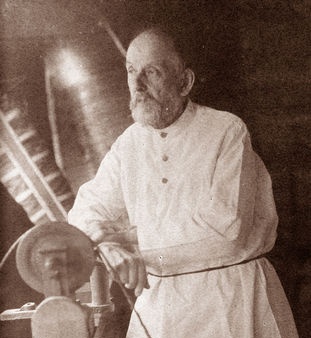|
 The higher the value of gravity, the greater its biological effect due to elastic compression. From the above, we can conclude that the biological effect of gravity at different points can be different, since the force of gravity on the earth's surface is unevenly distributed. The higher the value of gravity, the greater its biological effect due to elastic compression. From the above, we can conclude that the biological effect of gravity at different points can be different, since the force of gravity on the earth's surface is unevenly distributed.
Moreover, there are water bodies on Earth, where the deformation of objects will be even less pronounced.
In biology, the aquatic environment is usually called the cradle of life, which apparently provided the most favorable conditions for its emergence and development. The buoyancy force of water is numerically equal to the weight of the displaced liquid (Archimedes' law). Water is a liquid support with a large surface area. A significant distribution of points of support on the body neutralizes the deforming effect of gravity on tissues, blood vessels and the entire body, therefore the aquatic environment is called hypogravitational. Of course, gravity also exists in water, and in this case we are dealing with the effect of weight loss or decrease, and not with the disappearance of the gravitational field.
 |
| Tsiolkovsky K.E. |
Even in a state of weightlessness in space, a person is held captive by gravity. However, significant or absolute weight loss occurs - weightlessness. The reason for this phenomenon is associated both with the distance of the ship from the center of the Earth, and with the peculiarities of its motion, which consists of the uniform motion of the ship horizontally and accelerated fall along the vertical, which determines the leveling of gravitational forces. A decrease in the gravitational effect on any biological object leads to a decrease in the degree of micro- and macrodeformations of body tissues. Hypogravity helps to reduce the metabolic demand of tissues and leads to various effects. In the literature, the concepts of "weight" and "gravity" are often used as synonyms. According to experts, on the earth's surface, the force of weight is practically equal to the gravitational force.
After the emergence of life in water, the further evolution of living organisms was associated with the development of land. From the point of view of evolutionary biology, every birth of a living creature is its exit from the water environment onto land, into the world of gravitational forces. Becoming terrestrial both in its individual (in the mother's womb, the fetus also develops in the aquatic environment) and in historical (phylogenetic) development, humans and other mammals adapt to other requirements of the external environment. In contrast to the aquatic environment in the atmosphere, on land, all living things have to overcome much more weight and expend more energy.
Life on "land" led to the formation of organisms of a new type, the path to their adaptation ran through the harsh conditions of natural selection.
An increase in support forces is associated with upright posture. In this state, the gravity vector coincides with the longitudinal axis of the body and the elastic compression of the body is more significant than in the horizontal position. A powerful anti-gravitational musculature appeared, which allowed one to move freely in the gravitational field, defending its right to life.
Many animals with a large body mass that left the aquatic environment could not adapt to (on land) gravity and died. And currently one of the largest animals on Earth lives in the ocean - the blue whale, whose mass reaches 150 tons. Even K. E. Tsiolkovsky noted: "... where there is no gravity, there growth is unlimited, if we mean the dependence of growth on the forces of gravity."
Nature cannot create an animal over a certain size without changing the "design" or "material".In the book "Biology of Dwarfs and Giants" (1882) K. E. Tsiolkovsky considered the issues of adaptation and anthropology in the aspect of the influence of gravity forces on the human body.
The forces of gravity are the main condition for the development of life on our planet. There would be no air environment without gravitation. It is only thanks to him that the biosphere and man himself exist.
The study of anthropology has shown a difference in the structure of people depending on their habitat in relation to the equator. The Earth is flattened from the poles, and the influence of physical factors on a person in different parts of the planet, apparently, is ambiguous.
Scientists have found an inverse relationship between the magnitude of the Earth's magnetic field and human growth. So, with an increase in the Earth's magnetic field, a slowdown in growth (retardation) occurs, which was observed from the middle of the 4th millennium BC to the first centuries of our era. The process of increasing the growth of a modern person starting from the 1st century. n. e. runs in parallel with the decrease in the magnetic field. One way or another, we can state the relationship and the likely dependence of a person's growth on physical factors.
The force of gravity has different effects on organisms of different weights and sizes. If the size of an organism is less than 1 mm, it experiences almost no gravitational forces.
The issues of evolution in connection with the influence of space on the Earth's biosphere were first considered by V. I. Vernadsky back in 1928. The researcher calculated the mass of living biospheric matter, which, as it turned out, was constant in all geological epochs.
According to V.I. Vernadsky, living matter, in contrast to inanimate, has a different geometry, asymmetry distinguishes it from the surrounding physical world. Take a look at the surrounding flora and fauna. We will never find a single perfectly symmetrical structure or organ. Flowers, trees, leaves, fruits, all living things are asymmetrical.
Interest in the problem of asymmetry is constantly growing due to its constant presence both at the macro- and micro-levels. So, for example, the main arteries - the aorta and its branches - have a left-sided orientation from the plane of the body. The entire venous system is located to the right of the plane of symmetry. In the human body there is not a single paired organ that is symmetrical in structure or function. Observations have shown the predominance of the development of the right arm, right leg and the entire right half of the body in humans. Considering the presence of cross-innervation between the periphery and the central nervous system, we can accordingly speak of the dominance of the left half of the brain in most of the world's population.
 |
| Vernadsky V.I. |
Observations of researchers in recent years have shown the uneven distribution of the birth rate throughout the year in right-handed people compared to left-handers. According to the researchers, the asymmetry of living nature is predetermined by some kind of developmental rhythm and the influence of external influences of physical factors at the early embryonic stages of the formation of living beings cannot be ruled out. Right-handed people predominate in mid-latitudes. Among the inhabitants of the southern and equatorial regions of the Earth, there are significantly more left-handed people. So, is the asymmetry related to the Earth's gravitational field or other physical factors? This question has been repeatedly discussed by researchers, but there is still no clear answer to it.
Studying asymmetry at the anatomical level, scientists drew attention to the history of writing among different peoples. Closer to the equator, they began to write from right to left (Arabic writing). It is more convenient to write in this way with the left hand. In China and Japan, hieroglyphs are written from top to bottom. It is convenient to depict them with both the right and left hand. Of course, the history of the development of writing can only indirectly prove the unequal distribution of right- and left-handed people, depending on the location of various ethnic groups on Earth.
The study of the effect on the organism of such cosmic categories as gravity and weightlessness has significantly expanded our understanding not only in biology, but also in medicine.
In the human body, making a "transition" to other conditions of gravity (flight into outer space or simulating weightlessness on Earth), an adaptation to other measures of gravity arises, so he may experience significant discomfort during the return to normal conditions. For normal health during the readaptation period, a certain period of time is required.
Thus, we can say that before the end of the biological evolution of Homo sapiens, gravity played a significant role in its formation and development. The victory over the forces of gravity took place along the uncompromising path of natural selection. A weak one remained behind the barrier, but each victory exceeded the potential of the organism.
And in modern conditions, the force of gravity plays an important role in the life of individuals. Here is what the physicist and writer A. Clarke writes about this: "... She rules over us from birth to death, killing or maiming for the slightest mistake ..."
As you can see, life on Earth in all its manifestations is inextricably linked with the factors of outer space. The latter determine the growth rates, shape, structure and functions of living beings on our planet. The daily rhythm of physiological functions ("biological clock") of living beings is a clear evidence of the participation of "celestial mechanics" in the everyday life of a person and his diseases. A significant role in the evolutionary development of man was played by such categories, polar in their biological action, as gravity and weightlessness. The possibility of modeling these cosmic factors on Earth makes it possible to assess their role in the human body in normal and pathological conditions.
Gavrilova N.V.
|
 The higher the value of gravity, the greater its biological effect due to elastic compression. From the above, we can conclude that the biological effect of gravity at different points can be different, since the force of gravity on the earth's surface is unevenly distributed.
The higher the value of gravity, the greater its biological effect due to elastic compression. From the above, we can conclude that the biological effect of gravity at different points can be different, since the force of gravity on the earth's surface is unevenly distributed.










